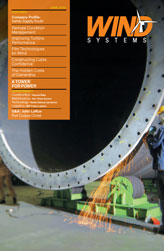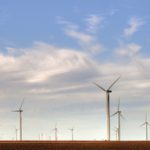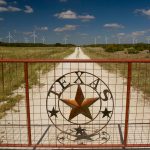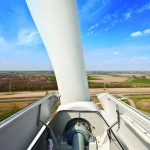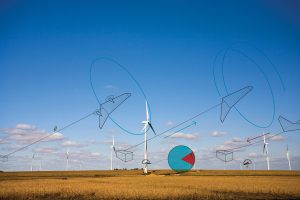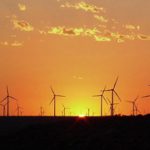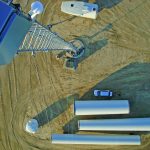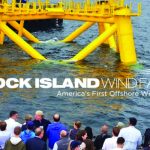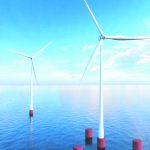The purchase of a wind turbine is obviously a major financial commitment, not simply in terms of the cost of purchasing and erecting the wind turbine but also the ongoing cost of maintenance and repair. Beyond the costs that are plainly spelled out in the turbine supply agreement and service and maintenance contract, there are a number of potential hidden costs that could multiply the amount of your initial purchase many times over. This article is intended to help you avoid, or at least reduce, some of these hidden costs by addressing them before you enter into the turbine supply agreement, when your negotiating power is strongest. This article will also help you understand how other costs can be avoided or reduced by diligently monitoring the service and maintenance of your wind turbines. Finally, this article concludes with a discussion of the critical importance of conducting a thorough and independent inspection of your wind turbines before the warranty period expires.
Historical Data
The manufacturer’s marketing material for a particular make and model of wind turbine may not be the most accurate predictor of how it will actually perform. The material may state, for example, that the expected life of the turbine is 20 years, but historical experience may show that it is much shorter, on average. Other information may not be covered at all by the manufacturer’s published material, such as the average cost to maintain a particular make and model of wind turbine or the failure rate of the major components of that turbine. If, for example, the gearbox fails every six years on average as opposed to every 10 years, the cost of replacing the gearbox will significantly increase your overall cost over the life of the wind turbine. Historical data should be obtained from the manufacturer on the particular make and model you are researching, especially the failure rate of major components, including the total replacement cost and estimated downtime. A current price list for major components will also be useful for comparison purposes.
In addition to the manufacturer’s historical data, information can also be obtained from other wind farms. Don’t simply ask the manufacturer for their contact information, as they may “cherry pick” the wind farms that will give the most favorable report. Instead, ask for a list of wind farms that excludes specific contact information but includes geographic location, number of wind turbines and their MW capacities, the annual fee paid by the wind farm to the manufacturer and the services included in that annual fee. Then, assuming the wind farm consents, the manufacturer can provide contact information for the wind farms you pick. AWEA also has information about wind farms throughout the U.S.
Annual/Renewal Fees
The wind turbine supply agreement will contain a two-year warranty, which you should extend by three or more years, and an annual fee for scheduled maintenance that is paid by the wind farm to the manufacturer. Once the warranty expires you will have to decide whether to enter into a service and maintenance agreement with the manufacturer or with a third party service provider. Significant factors in that decision will be the amount of the annual fee charged by each, what services are covered by the fee, and the capabilities of the provider to both respond quickly and obtain potentially scarce parts to minimize downtime. Before you purchase a wind turbine you should understand how the manufacturer calculates the renewal fee that will be charged in the event that you elect to have the manufacturer provide service and maintenance following expiration of the warranty. You should also know the manufacturer’s standard length of the renewal term. Both the renewal fee and length of the term can often be negotiated.
The fees you pay to a manufacturer for maintenance and repairs generally have three components: the base cost component, the site-specific component, and the turbine-specific component. The base cost component is the starting point for determining the amount of the fee that will be paid by a specific wind farm. The site-specific component will adjust the base cost component by factoring in the number of wind turbines, the distance the manufacturer’s service personnel will have to travel to reach your site, the weather conditions in the geographic area where your site is located, the ease or difficultly with which your site can be accessed, and other site-related considerations.
In addition to these first two cost components, the manufacturer will factor in the condition of your wind turbines at the time of renewal. The poorer the condition of your wind turbines, the higher the renewal fee is likely to be. Ironically, the condition of your wind turbines at the end of the warranty period is directly tied to the initial design and manufacture of the turbines and the quality of the maintenance and repairs performed by the manufacturer during the warranty period, which we will discuss further. Whatever information you can obtain about these three cost components before purchasing a wind turbine will help you negotiate the amount of, or at least the formula for calculating, the renewal fee that will be charged at the end of the warranty period.
The manufacturer’s historical average cost to maintain a particular make and model of wind turbine, and the failure rate of major components in that turbine, can significantly impact the amount of the renewal fee. As discussed in the preceding section, you can obtain from the manufacturer a list of wind farms so that you have a basis to compare annual/renewal fees and the services included in those fees. In order to have an “apples to apples” comparison you will need to look at comparable wind farms, in terms of the number and size of the turbines, site-specific conditions like location and weather, and the amount of the renewal fee paid by those wind farms and the services included in that renewal fee.
Finally, most renewal fees are adjusted annually so you will have to understand how the adjustment is calculated; e.g., it may be tied to a published index, or it may be a straight percentage. The more you know about the renewal fee calculation, the historical data that is factored in, what other wind farms are paying, and what services are included, the better armed you will be to negotiate the most services for the lowest renewal fee.
Buyer vs. Seller Responsibilities
Before you purchase a wind turbine determine whether you or the manufacturer are responsible for site preparation, soil tests, the wind turbine foundation and the transformer pad, constructing access roads, installation of fiber optic cable, and other similar responsibilities aside from erecting the wind turbine itself. To the extent that any of these areas are your responsibility, the manufacturer will not take responsibility if the wind turbine later has performance issues related to problems in these areas. Given the potentially catastrophic consequences of the wind turbine falling over and the enormous cost of correcting soil conditions or a defective tower foundation, the question of who has responsibility in each of these areas has a direct impact on your potential costs over the life of the wind turbine.
Some buyer responsibilities will be plainly set forth in the turbine supply agreement, but the attendant costs may not be. For example, you may be required to obtain permits, connect to the power grid, and install phone and fiber optic lines. These responsibilities should be spelled out in the contract, but you will need to research the cost associated with each of these responsibilities.
Manufacturer Personnel, Suppliers, and Subcontractors
It may be common sense that the quality of the service and maintenance that will be performed on your wind turbines depends on the quality of the service personnel who will be assigned to your wind farm, but owners often do not meet these personnel until after the contract is signed. As you are researching and comparing various makes and models, ask for the resumes of the service personnel who will be assigned to your wind farm. Find out who will be the primary contact person for service and maintenance issues, and talk to that person about the resources and support you can expect. In addition to the qualifications and experience of the service team that would be assigned to your location, find out how many other wind farms the team is assigned to, as this will affect their responsiveness. Lost production revenue caused by delays in performing repairs is a significant source of potential cost. Ask the manufacturer for information on the average delivery time for replacement parts and components and the average time to repair or replace parts and components, particularly major components. The unavailability of cranes is one of the most significant potential sources of delay in the service and maintenance of wind turbines. Your wind turbine could be down for weeks or even months if no crane is available. Ask the manufacturer for the name of the crane company it uses in your area, and talk directly with the crane company about response time. If possible, insert a provision in the turbine supply agreement or service and maintenance agreement that provides compensation for lost production in the event that your wind turbines experience significant downtime caused by crane unavailability, the manufacturer’s failure to perform proper or timely repairs, or for other reasons that fall under the manufacturer’s responsibilities.
This is another area in which talking to other wind farms can provide useful information about the manufacturer’s track record of performing timely and proper scheduled service and unscheduled repairs.
Contract Warranty and Remedies
Before you purchase wind turbines you must understand exactly what the warranty covers and the length of the warranty period. You must also understand what remedies are available to you if a manufacturer fails to perform under the contract. Oftentimes the contract will exclude certain types of damages such as lost production revenue, and there will be a cap on the total amount of the manufacturer’s potential liability.
There are provisions you should attempt to insert into the contract. For example, the manufacturer should be required to maintain your wind turbines to a defined standard of performance. If the wind turbine’s performance falls below that standard and the manufacturer fails to restore it to that standard after a reasonable period of time, you should have the right to fix or replace the wind turbine and charge that cost back to the manufacturer. You should attempt to include a clause that provides payment of liquidated damages if the manufacturer’s failure to meet that standard causes lost production revenue. A final example is a provision requiring the manufacturer to indemnify you in the event that you breach your power provider agreement for reasons attributable to some failure or non-performance of the manufacturer.
Before purchasing wind turbines, obtain a copy of the manufacturer’s current service and maintenance agreement that goes into effect once the warranty expires. All of the issues discussed previously will have to be reviewed in connection with this agreement: amount and calculation of renewal fees, remedies and damage limitations and calculations, what is covered and what is excluded, and the like. If some of these provisions are not negotiated prior to purchase, you may have very little leverage to negotiate as the end of the warranty period approaches.
Your option to switch to a third party service and maintenance provider may be limited, as well. Most service and repair companies will charge a fixed annual fee for scheduled service calls and will charge on a time and material basis for unscheduled maintenance and repairs. The uncertainty and risk associated with this unscheduled maintenance and repair will heavily influence your decision as to who performs service and maintenance once the warranty expires. This issue is discussed in more detail in the next section.
Buyer Beware
After commissioning it is critical that you monitor at some level the service and maintenance that is performed on your wind turbines. Do not assume that such monitoring is unnecessary because your wind turbines are under warranty. At the very least you should have someone on your staff check the service log for each wind turbine to ensure that scheduled service visits are made on a timely basis and performed properly. Ideally that person will have regular and frequent contact with the service team, and will proactively work with them to schedule service and repairs and minimize delays and downtime. You should also hire a technical consultant at least annually to inspect the overall condition of the wind turbines and to identify warranty and repair issues. The technical consultant should also be present at the time of commissioning to identify any design or manufacturing defects, and to ensure that the wind turbines are properly commissioned.
Do not let your warranty expire without undertaking a thorough inspection of the wind turbine and submitting a complete list of warranty repairs. The warranty claims must be submitted to the manufacturer in a way that complies with the contract. For a more detailed discussion of pre-end of warranty inspections see the maintenance column by Merritt Brown of Rev1 Power Services in the March 2010 issue of Wind Systems magazine.
Remember, if you are responsible for conducting soil borings, constructing the tower foundation, connecting the wind turbines to the power grid, or other similar responsibilities, any defect or failure with respect to any of these responsibilities could form the basis for the manufacturer to avoid responsibility for mechanical failures in the wind turbines. Similarly, if you fail to identify or properly submit design, manufacturing, or mechanical defects or failures during the warranty period, you may not have a remedy against the manufacturer. Certainly, the condition of your wind turbines at the end of the warranty period could impact the amount of the renewal fee charged by the manufacturer, the amount of uncertainty and risk you face if you switch to a third-party service and maintenance organization, and the overall life of the turbine. Careful attention to all of these details will help ensure that your wind turbines operate for their full expected life.
Conclusion
This article is not meant to present an exhaustive list of all the potential hidden costs associated with purchasing and owning wind turbines. It is intended to alert you to issues that, if not addressed early, could result in you paying substantial costs not spelled out in the contract documents.
Note: The author gratefully acknowledges contributions to this article made by Dan Hayes, manager of Renewable Energy and Communications, Southern Minnesota Municipal Power Agency. He can be reached at dm.hayes@smmpa.org.
















